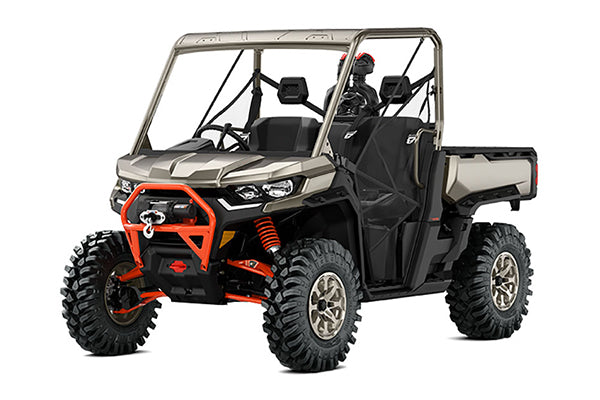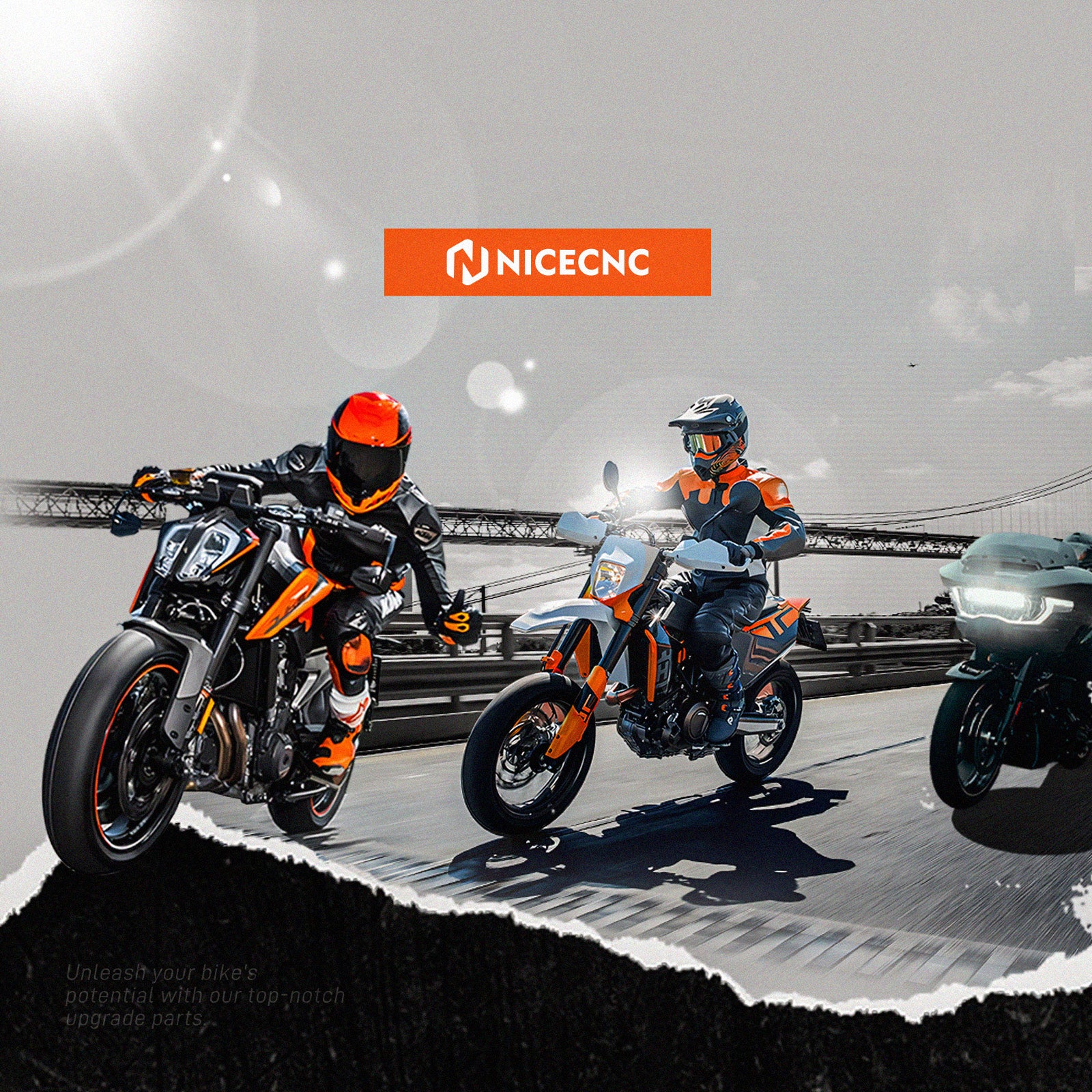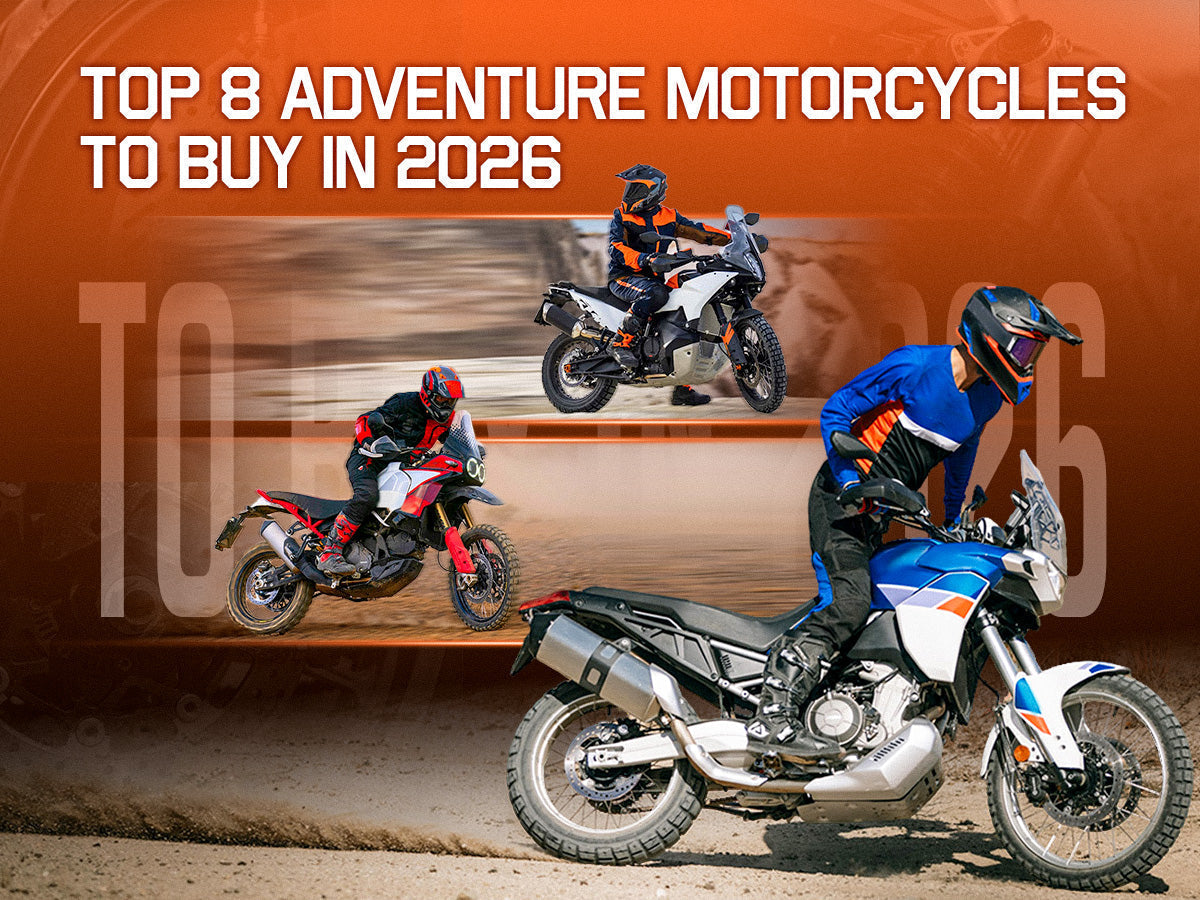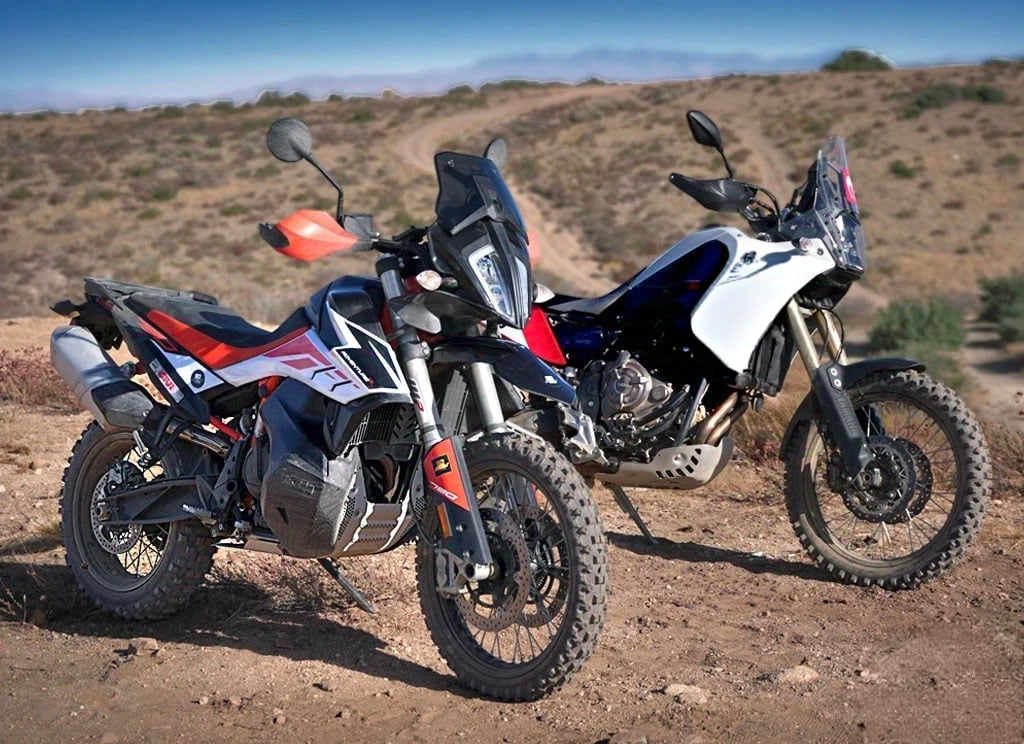So, you've decided to join the adventure riding community. Welcome! It's one of the most rewarding ways to explore the vast and varied landscapes of the U.S. But now you're faced with the classic first-world problem of the ADV world: choosing your steed.
Two names consistently rise to the top for new riders: the European, tech-savvy KTM 390 ADVENTURE and the Japanese legend, the Kawasaki KLR650. You'll see them compared constantly in forums and YouTube comments.
This guide will cut through the noise. We're not just listing specs; we're diving deep into what it's actually like to own and ride these machines. By the end, you'll know which bike is the key to your personal adventure.
1. The Rivalry: Why Compare Apples and Oranges?
At first glance, comparing a 373cc Austrian to a 652cc Japanese seems odd. However, they are frequently cross-shopped because they both serve as the primary gateway into the adventure motorcycle category for riders on a budget. They represent two fundamentally different philosophies on how to achieve the same goal: capable, reliable, and affordable exploration.
Their key common ground:
- Adventure DNA: Both feature an upright riding position, long-travel suspension, and a 19-inch front wheel (with specific KLR trims). These are the core ingredients that define an ADV bike.
- Budget-Conscious Entry Point: Compared to flagship models from BMW or KTM's own 790/890 series, both are significantly more affordable, both in initial purchase price and long-term ownership.
- "Jack-of-All-Trades" Mentality: Neither is a purebred dirt bike nor a plush touring couch. They are designed to be a competent compromise, capable of handling your daily commute, a weekend blast down a fire road, and a multi-day camping trip.
- A Culture of Customization: Both motorcycles are celebrated for their vast aftermarket support. They are not static products but platforms for personalization, encouraging owners to tailor the bike to their specific journeys.
The comparison isn't about which bike is objectively "better." It's about deciding which philosophy of adventure aligns with your riding dreams.
2. Ergonomics & All-Day Comfort
This is where the philosophies diverge most dramatically, impacting your physical state after hours in the saddle.
KTM 390 ADVENTURE: The Agile Sport-ADV
The KTM looks sharp, angular, and modern. It's noticeably smaller and lighter, making it feel approachable, especially for shorter riders or those new to heavier motorcycles. With a seat height of 33.6 inches, it's manageable, though still tall for some.
Riding Position & Ergonomics:
The KTM places you in a noticeably sporty, yet still upright, stance. The handlebar is wide, but the footpegs are set relatively high and rear-set, creating a slight bend in the knees that is reminiscent of a sport-naked bike. You sit in the motorcycle, which contributes to a feeling of being one with the machine. This is excellent for aggressive pavement riding and active off-road maneuvering, as it allows you to easily shift your weight.
Seat Comfort:
The seat is one of the KTM's most common critique points. It is firm and narrow, designed for freedom of movement rather than plush comfort. For riders under 5'10", it can be manageable for 2-3 hours. For taller riders, the pressure points can become pronounced much sooner, making an aftermarket seat a highly recommended upgrade for any serious touring.
Wind Protection & Vibration:
The manually adjustable windscreen is effective for riders of average height, directing air to the upper chest and helmet. However, it can buffet taller riders. Being a high-revving single, the engine produces noticeable vibration through the bars and pegs above 6,500 RPM, which can lead to hand and foot fatigue on long highway slogs.
Kawasaki KLR650: The Commanding Armchair
The KLR is big, tall, and utilitarian. It has a no-nonsense, industrial charm that shouts "durability." Its 34.3-inch seat height (on the base model) can be intimidating, but the narrow frame helps. The "S" model with a lower seat is a boon for many.
Riding Position & Ergonomics:
The KLR is the definition of a roomy, neutral riding position. You sit *on top* of the bike, not in it, with a tall, commanding view of the road. The handlebar is wide and high, the footpegs are low and forward, creating a relaxed, almost dirt-bike-like posture. There is ample space to move around on the long, flat seat. This is a fantastic position for long, straight-line miles but can feel a bit vague when pushing hard on twisty roads.
Seat Comfort:
The KLR's seat is famously wide and flat—and famously firm. It's often described as a "2x4." However, its large surface area distributes weight better than the KTM's for many riders. Still, for genuine all-day comfort, a seat upgrade is one of the most popular and transformative modifications for the KLR.
Wind Protection & Vibration:
The KLR's fairing and large, fixed windscreen provide outstanding weather protection. It acts like a barn door, shielding your legs and torso from wind and rain. The engine, with its counterbalancer, is remarkably smooth for a large single. It produces a low-frequency pulse rather than a high-frequency buzz, making it far less fatiguing for sustained highway cruising.
3. Performance & Specs Showdown
| Specification | KTM 390 ADVENTURE | Kawasaki KLR650 |
|---|---|---|
| Engine Type | 373cc, Liquid-Cooled, DOHC Single | 652cc, Liquid-Cooled, SOHC Single |
| Bore x Stroke | 89mm x 60mm | 100mm x 83mm |
| Power | 44 hp @ 9,000 rpm | 39 hp @ 6,000 rpm |
| Torque | 27.3 lb-ft @ 7,000 rpm | 39.5 lb-ft @ 4,500 rpm |
| Transmission | 6-Speed | 5-Speed |
| Fuel Capacity | 3.8 gallons (14.5 L) | 6.1 gallons (23 L) |
| Estimated Range | ~180-220 miles | ~280-320 miles |
| Curb Weight | 379 lbs (172 kg) | 432 lbs (196 kg) |
| Front Suspension | 43mm WP APEX USD, 6.7 in travel | 41mm Showa USD, 7.9 in travel |
| Rear Suspension | WP APEX Monoshock, 6.7 in travel | Bottom-Link Uni-Trak, 7.3 in travel |
| Brakes (Front) | 320mm disc, 4-piston radial caliper | 300mm disc, 2-piston caliper |
| ABS / TC | Standard Cornering ABS & Traction Control | Standard ABS (non-cornering, can be disabled) |
4. Terrain & Rider Profile: Matching the Machine to Your Mission
This is the ultimate decision-making section. Be honest about where and how you will ride.
KTM 390 ADV: The Urban & Technical Terrain Specialist
Ideal Terrains:
- City Commuting: Its light weight, nimbleness, and slim profile make it a master of urban combat.
- Twisting Mountain Roads: The sporty engine and chassis make it an absolute joy on technical pavement.
- Technical Off-Road: On tight, rutted, or sandy trails, the KTM's low weight is a game-changer. It is less physically demanding to ride and far less daunting to pick up after a drop. It builds off-road confidence rapidly.
The Perfect KTM Rider:
- The rider whose adventure is 60% street, 40% dirt.
- Values a fun, engaging, and modern riding experience.
- Plans shorter, more aggressive trips focused on the quality of the riding, not just the distance covered.
- Is likely to be a shorter or less experienced rider who is intimidated by heavy bikes.
Kawasaki KLR650: The Continental Crosser & Fire Road King
Ideal Terrains:
- Interstate & Highway Miles: The KLR is a mile-muncher. Its smooth(ish) engine, relaxed ergonomics, and massive fuel tank are built for eating up American interstates.
- Wide Gravel & Forest Service Roads: It is the undisputed king of the fire road. Stable, comfortable, and unflappable.
- Remote & Rugged Exploration: Its simple mechanics and legendary reliability inspire confidence when you are hundreds of miles from the nearest mechanic.
The Perfect KLR Rider:
- The rider whose adventure is 80% street, 20% dirt, but that dirt can be in the middle of nowhere.
- Dreams of cross-country trips or multi-week BDR (Backcountry Discovery Route) expeditions.
- Values simplicity, range, and durability above all else.
- Isn't afraid of a bike's weight and enjoys the "tinkerer" aspect of motorcycle ownership.
5. Practicality & Mods
KTM 390 ADVENTURE: The Plug-and-Play Modernist
Functionality:
It comes with modern essentials like a brilliant TFT display, LED lighting, and a slipper clutch. However, the small fuel tank and limited stock luggage options are drawbacks for long tours.
Modifications:
The aftermarket is extensive and growing rapidly. You can find everything from crash bars and skid plates to custom luggage and seat upgrades. Installation is generally straightforward, with many parts using standard mounting points. Its electronics (like the ride modes) are integrated, so you're not adding aftermarket ECUs.
Kawasaki KLR650: The Tinkerer's Paradise
Functionality:
It's a blank canvas. It comes with basics, but the culture of the KLR is about personalizing it to your exact needs. The "DIY" or "Do-It-Yourself" ethic is strong.
Modifications:
The aftermarket is vast, mature, and relatively inexpensive due to the bike's decades-long production run. From the famous subframe bolts and cooling mods to every conceivable luggage and protection solution, you can build the KLR of your dreams. Its simple air-cooled/oil-cooled engine and carburetor-like fueling make it very easy to work on in your garage with basic tools.
6. FAQ
Q1: I plan to do a lot of two-up riding. Which bike is better?
A: The Kawasaki KLR650 is the clear choice. Its torquey engine doesn't struggle as much with the added weight, the chassis and suspension are designed to handle heavier loads, and the passenger seat is larger and more comfortable. The KTM is too small and underpowered for regular two-up duty.
Q2: I'm a brand new rider. Which one is better for me?
A: The KTM 390 ADVENTURE is generally more beginner-friendly due to its lower weight, smoother power delivery, and advanced safety aids like cornering ABS. It's less intimidating to learn on. However, a confident taller beginner can absolutely start on a KLR—just respect its weight, especially off-road.
Q3: Can I realistically take the KLR on single-track?
A: You can, but it's not ideal. Its significant weight makes it exhausting in technical, slow-speed terrain. It's better suited for wider, faster off-road tracks. The KTM is the much more capable bike for tight, technical trails.
Q4: Is the KTM powerful enough for the American highway?
A: Yes, but with a caveat. It will comfortably cruise at 70-75 mph. However, it has little power in reserve for high-speed passing or fighting strong headwinds, and the high-revving engine can feel buzzy. The KLR, while not fast, feels more planted and unstressed at highway speeds thanks to its larger engine and taller gearing.
Q5: What is the "doohickey" I keep hearing about on the KLR?
A: The "doohickey" is the nickname for the balancer chain lever in the engine. On older KLRs, the factory part was prone to failure. While Kawasaki has improved it over the years, replacing it with a billet aluminum aftermarket part is still a famous rite of passage for KLR owners for ultimate peace of mind.
7. Conclusion: Your Adventure, Your Choice
The decision is not about finding a winner, but about finding your partner.
Choose the KTM 390 ADVENTURE if your adventures are dynamic, technical, and often close to home. You are the "Weekend Warrior" who sees every backroad and trail as a playground. You value flickability, modern tech, and a bike that makes you a better, more active rider.
Choose the Kawasaki KLR650 if your adventures are defined by distance, self-reliance, and the open road. You are the "Continental Explorer" who dreams of riding from Key West to Prudhoe Bay. You value simplicity, range, and the unwavering confidence of a machine that refuses to quit.















